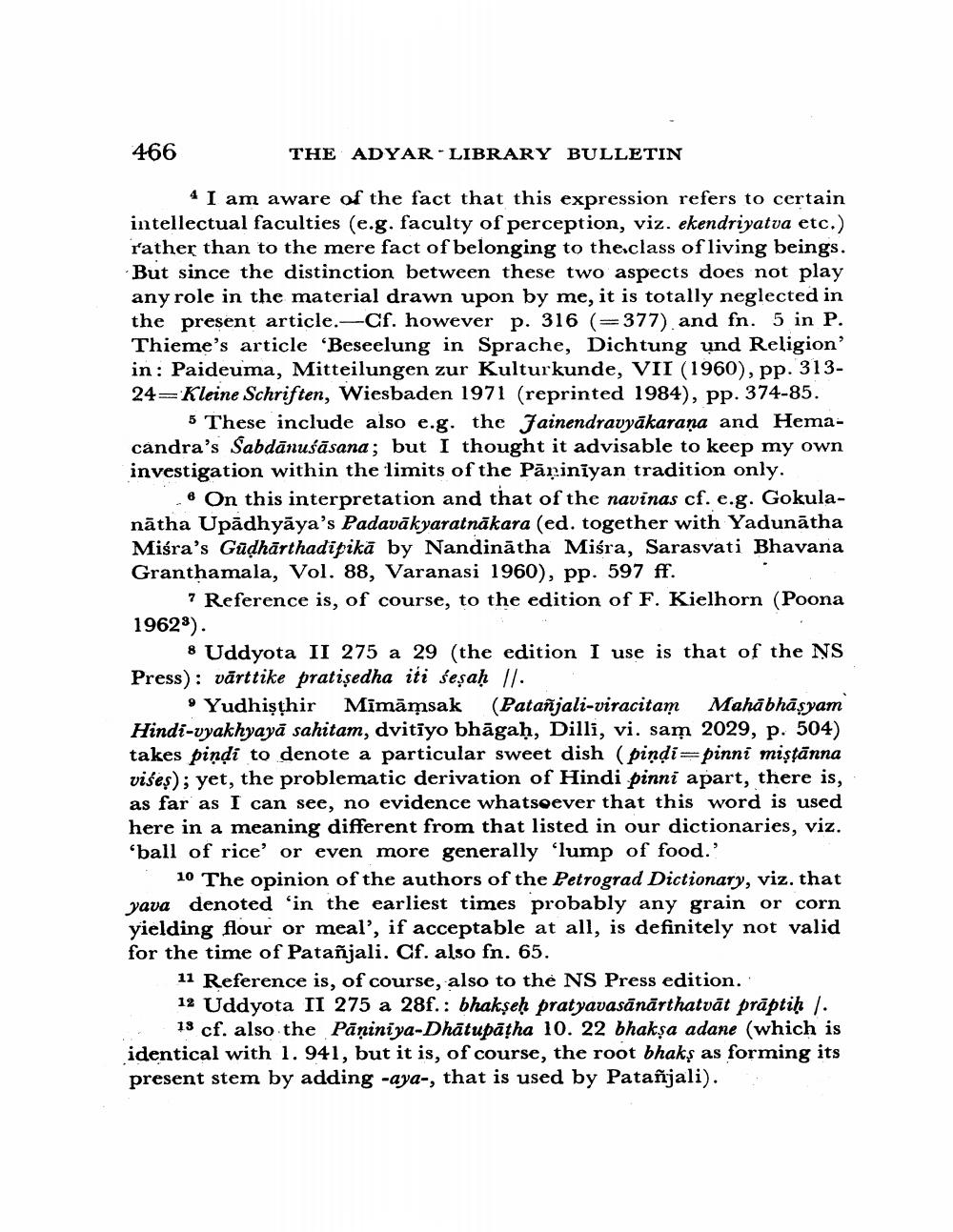________________
466
THE ADYAR LIBRARY BULLETIN
4 I am aware of the fact that this expression refers to certain intellectual faculties (e.g. faculty of perception, viz. ekendriyatua etc.) rather than to the mere fact of belonging to the class of living beings. But since the distinction between these two aspects does not play any role in the material drawn upon by me, it is totally neglected in the present article.-Cf. however p. 316 (377) and fn. 5 in P. Thieme's article 'Beseelung in Sprache, Dichtung und Religion' in: Paideuma, Mitteilungen zur Kulturkunde, VII (1960), pp. 31324 Kleine Schriften, Wiesbaden 1971 (reprinted 1984), pp. 374-85.
These include also e.g. the Jainendravyakaraṇa and Hemacandra's Sabdanusāsana; but I thought it advisable to keep my own investigation within the limits of the Pāņinîyan tradition only.
• On this interpretation and that of the navinas cf. e.g. Gokulanätha Upadhyaya's Padaväkyaratnākara (ed. together with Yadunatha Miśra's Gadhärthadipika by Nandinātha Miśra, Sarasvati Bhavana Granthamala, Vol. 88, Varanasi 1960), pp. 597 ff.
Reference is, of course, to the edition of F. Kielhorn (Poona
19623).
Uddyota II 275 a 29 (the edition I use is that of the NS Press): vārttike pratisedha iti sesaḥ .
Yudhisthir Mimāmsak (Patanjali-viracitam
Mahābhāṣyam Hindi-vyakhyaya sahitam, dvitiyo bhāgaḥ, Dilli, vi. sam 2029, p. 504) takes pindi to denote a particular sweet dish (pindi pinni miṣṭānna vises); yet, the problematic derivation of Hindi pinni apart, there is, as far as I can see, no evidence whatsoever that this word is used here in a meaning different from that listed in our dictionaries, viz. 'ball of rice' or even more generally 'lump of food."
10 The opinion of the authors of the Petrograd Dictionary, viz. that yava denoted 'in the earliest times probably any grain or yielding flour or meal', if acceptable at all, is definitely not valid for the time of Patañjali. Cf. also fn. 65.
11 Reference is, of course, also to the NS Press edition.
12 Uddyota II 275 a 28f.: bhakseḥ pratyavasänärthatvāt präptiḥ . 13 cf. also the Paniniya-Dhatupatha 10. 22 bhakṣa adane (which is identical with 1. 941, but it is, of course, the root bhaks as forming its present stem by adding -aya-, that is used by Patanjali).




